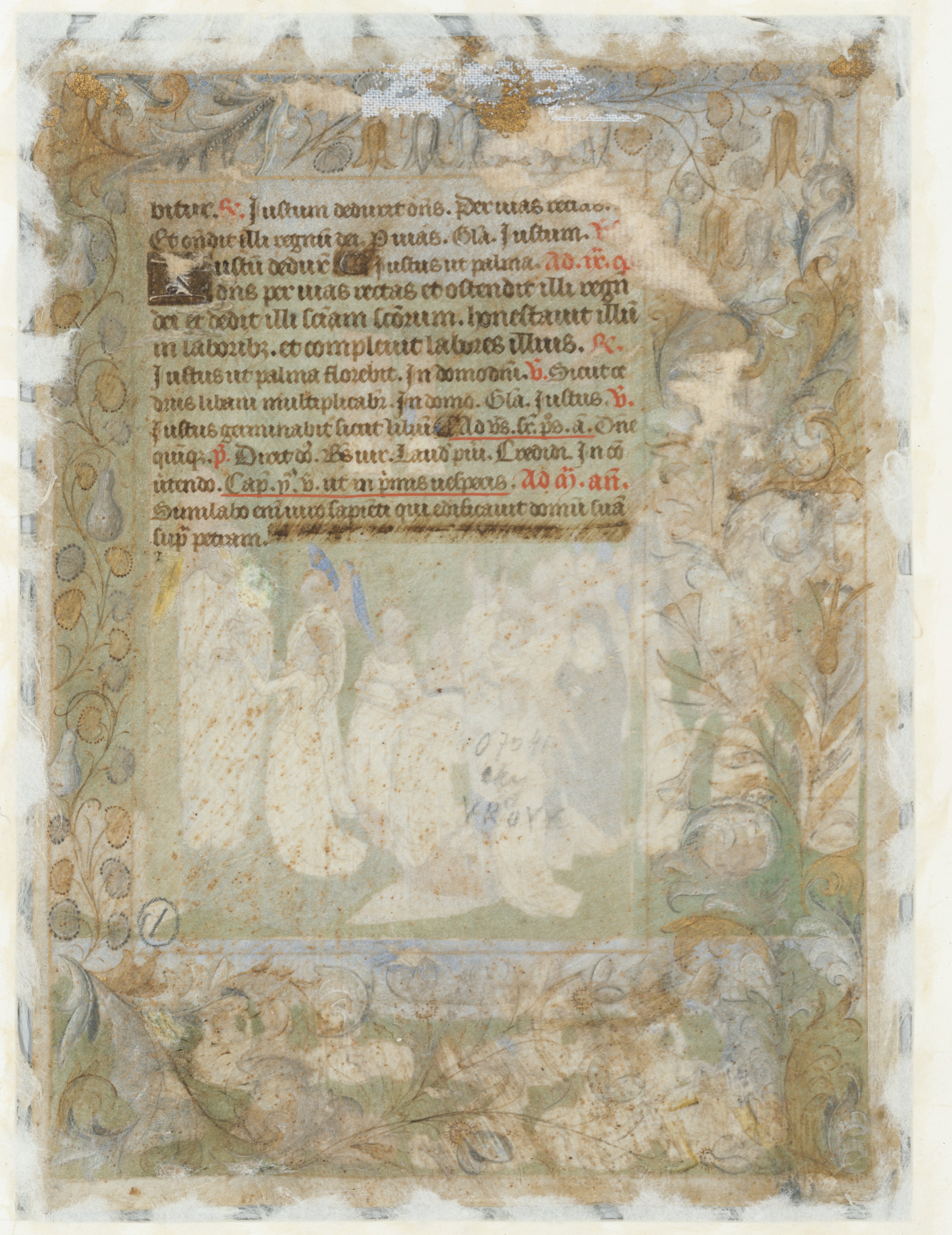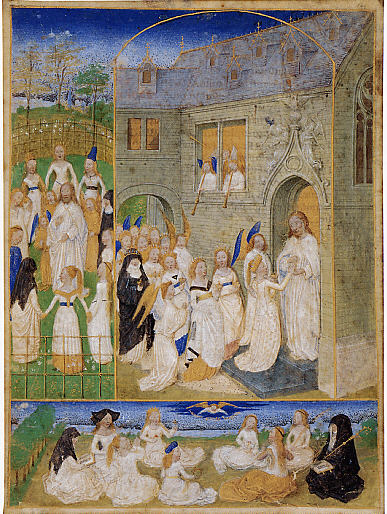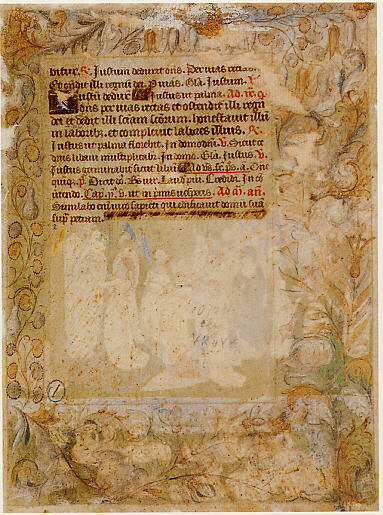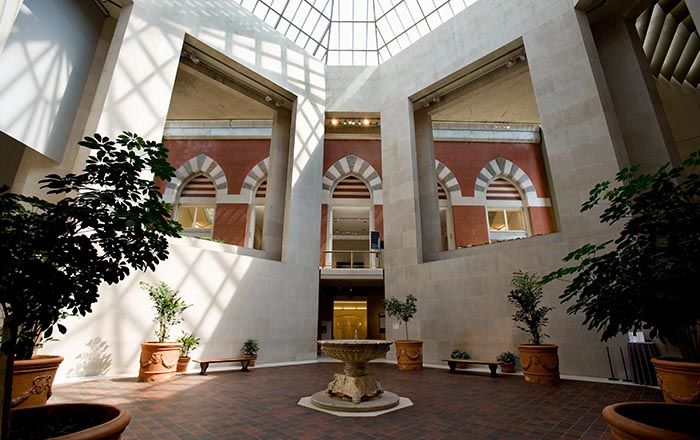The Holy Virgins Greeted by Christ as They Enter the Gates of Paradise
Simon Marmion French
Not on view
This miniature, depicting the Holy Virgins being greeted by Christ at the gates of paradise, was originally part of a breviary, which is a book containing the Divine Office for recitation on each day of the Roman Catholic calendar. The image would have faced the opening lines of the text for the Common of Virgins. The location and orientation of the image within the book is confirmed by the text on the back of this miniature, which is the end of the Common of Confessors—a section that traditionally precedes the Common of Virgins. Marmion has divided the leaf into three scenes, each of which illustrates part of the text of the Common of the Virgins. Among the figures in all three scenes is the abbess of a religious order, identifiable by her black habit, whose identity and meaning have yet to be unraveled.This book must have been lavishly illustrated, since full-page miniatures in the Common of Saints section, like this one, were rare. The generous use of gold leaf further underscores the expense of the original manuscript, which was begun for Philip the Good, duke of Burgundy, in 1467, and finished in 1470 for Charles the Bold, Philip's son and successor. A surviving document indicates that the manuscript had 624 folios, 95 miniatures, and was illustrated for the ducal court by Simon Marmion and his workshop. This breviary was one of a number of works undertaken by Marmion, one of the most esteemed illuminators and painters of his generation.
Due to rights restrictions, this image cannot be enlarged, viewed at full screen, or downloaded.
This artwork is meant to be viewed from right to left. Scroll left to view more.





